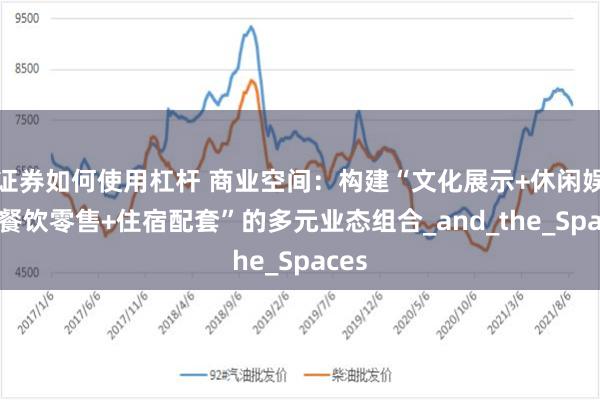
【友情提示】世界那么大证券如何使用杠杆,为防走散,请将AYS规划设计事务所加星标!关注AYS爱易设,关注AYS规划设计事务所,点击上方名片-点右上角弹出菜单栏设为星标即可。
随着消费升级和文旅融合的加速,传统商业空间逐渐向“文化+旅游+商业”的复合模式转型。文旅商业空间不仅承担商业功能,还需满足游客的文化体验需求,因此其规划与运营逻辑与传统商业有显著差异。
一、文旅商业空间的规划思维
文化IP与主题化定位:文旅商业空间的核心竞争力在于其文化属性,需通过文化IP或在地文化资源的挖掘形成差异化主题。例如:历史文脉型(如西安大唐不夜城以盛唐文化为主题)民俗风情型(如丽江古城融合纳西族文化)创意IP型(如迪士尼小镇依托影视IP)
场景化与体验设计:与传统商业的“货架逻辑”不同,文旅商业空间强调场景叙事与互动体验,具体策略包括:空间叙事:通过建筑风格、景观小品、灯光音效等营造沉浸式氛围。互动科技:运用AR/VR、全息投影等技术增强游客参与感。
业态复合化与功能融合:文旅商业空间需打破单一零售模式,构建“文化展示+休闲娱乐+餐饮零售+住宿配套”的多元业态组合,例如:文化业态:博物馆、非遗工坊、艺术展览;娱乐业态:主题乐园、沉浸式剧场;商业业态:文创零售、特色餐饮
展开剩余92%可持续开发与运营前置:文旅项目通常投资大、回报周期长,规划阶段需考虑:分期开发:优先建设核心吸引物,逐步完善配套。运营前置:在规划阶段即引入运营团队,避免设计与市场需求脱节。
With the acceleration of consumption upgrade and the integration of culture and tourism, traditional commercial Spaces are gradually transforming into a composite model of "culture + tourism + business". Cultural and tourism commercial Spaces not only undertake commercial functions but also need to meet tourists' cultural experience demands. Therefore, their planning and operation logic are significantly different from those of traditional commercial Spaces.
I. Planning Thinking for Cultural and Tourism Commercial SpacesCultural IP and thematic positioning: The core competitiveness of cultural and tourism commercial Spaces lies in their cultural attributes. It is necessary to form differentiated themes through the exploration of cultural IP or local cultural resources. For instance: Historical and cultural context type (such as the Tang Dynasty Ever-Bright City in Xi 'an, which takes the culture of the prosperous Tang Dynasty as its theme), folk custom type (such as the Old Town of Lijiang, which integrates Naxi culture), and creative IP type (such as the Disneytown, which relies on film and television ips)
Scene-based and experiential design: Unlike the "shelf logic" of traditional commerce, cultural and tourism commercial Spaces emphasize scene narrative and interactive experience. Specific strategies include: Spatial narrative: Creating an immersive atmosphere through architectural style, landscape features, lighting and sound effects, etc. Interactive technology: Utilizing technologies such as AR/VR and holographic projection to enhance visitors' sense of participation.
Diversification of business formats and functional integration: Cultural and tourism commercial Spaces need to break away from the single retail model and build a diversified business format combination of "cultural display + leisure and entertainment + catering and retail + accommodation facilities", for example: cultural business formats: museums, intangible cultural heritage workshops, art exhibitions; Entertainment formats: theme parks, immersive theaters; Business formats: cultural and creative retail, characteristic catering
Sustainable development and operation in advance: Cultural and tourism projects usually require large investments and long payback periods. During the planning stage, the following should be considered: phased development: Prioritize the construction of core attractions and gradually improve supporting facilities. Pre-operation: Introduce the operation team at the planning stage to avoid the disconnection between design and market demand.
二、当前文旅商业空间的运营逻辑
流量驱动:从“场地租赁”到“内容运营”,传统商业依赖区位流量,而文旅商业需通过内容创造客流,主要方式包括:爆款活动:市集、节庆、艺术展等短期引流项目。网红经济:打造打卡点,借助社交媒体传播。
运营模式创新:自营+联营+租赁组合:自营核心业态(如文化展览)以保证品质;联营分成(如与非遗传承人合作)降低商户风险;租赁补充业态(如零售)稳定现金流。会员经济与社群运营:通过会员体系、粉丝社群增强用户粘性。
数据化运营:借助大数据分析游客行为,优化业态布局与营销策略,例如:热力图分析调整商铺位置;消费数据指导商品组合优化。
Ii. The Current Operational Logic of Cultural and Tourism Commercial Spaces
Traffic-driven: From "venue rental" to "content operation", traditional businesses rely on location traffic, while cultural and tourism businesses need to create foot traffic through content. The main methods include: hit events: short-term traffic diversion projects such as markets, festivals, and art exhibitions. The influencer economy: Creating check-in spots and leveraging social media for dissemination.
Innovation in operation mode: Self-operation + joint operation + leasing combination: Self-operate core business formats (such as cultural exhibitions) to ensure quality; Joint venture revenue sharing (such as cooperation with intangible cultural heritage inheritors) reduces the risks for merchants; Leasing supplementary business formats (such as retail) stabilizes cash flow. Membership economy and community operation: Enhance user stickiness through membership systems and fan communities.
driven operation: By leveraging big data to analyze tourists' behaviors, optimize the layout of business formats and marketing strategies, for instance: adjust the locations of shops through heat map analysis; Consumption data guides the optimization of commodity combinations.
三、产品业态与运营模式的定位方法
市场调研与客群分析:目标客群画像:本地居民、周边游客或全国游客;消费偏好分析:文化体验、休闲娱乐或购物需求;竞品研究:同类项目的成功经验与失败教训。
文化资源与IP价值评估:挖掘在地文化(如历史遗迹、民俗技艺);引入外部IP(如影视、动漫联名)增强吸引力。
业态组合策略:主力店引流(如博物馆、主题餐厅);次主力店提升停留时间(如文创店、体验工坊);配套业态完善服务(如便利店、休息区)。
运营模式选择:重资产模式:自持物业,长期运营(如文旅综合体);轻资产模式:品牌输出,管理赋能(如代运营文旅小镇)。
Iii. Positioning Methods for Product Formats and Operation ModelsMarket research and customer group analysis: Target customer group profile: Local residents, nearby tourists or tourists from all over the country; Analysis of consumption preferences: cultural experience, leisure and entertainment, or shopping demands; Competitive product research: Successful experiences and lessons learned from similar projects.
Cultural resource and IP value assessment: Exploring local culture (such as historical relics, folk skills); Introduce external ips (such as film and television, animation collaborations) to enhance appeal.
Business format combination strategy: Main store traffic diversion (such as museums, theme restaurants); Increase the stay time in secondary anchor stores (such as cultural and creative stores, experience workshops); Complete supporting business formats and services (such as convenience stores and rest areas).
Operation mode selection: Heavy asset model: Self-held properties, long-term operation (such as cultural and tourism complexes); Light-asset model: Brand output, management empowerment (such as agency operation of cultural and tourism towns).
四、未来文旅商业空间的招商与运营趋势
招商策略:精准匹配与文化赋能;优先选择与文化主题契合的品牌;扶持文创、国潮品牌以增强独特性。
科技赋能智慧化运营:虚拟招商(VR看铺)、智能导览、无人零售等技术应用;AI数据分析优化运营效率。
跨界融合创新业态:文旅+康养:引入温泉、禅修等健康业态;文旅+教育:开发研学旅行、文化课程。
可持续发展路径:绿色设计:低碳材料、节能技术;社区共建:与本地居民合作,避免过度商业化。
Iv. Trends in the Recruitment and Operation of Future Cultural and Tourism Commercial SpacesInvestment promotion strategy: Precise matching and cultural empowerment; Give priority to choosing brands that are in line with cultural themes; Support cultural and creative as well as domestic trend brands to enhance their uniqueness.Technology empowers intelligent operation: Applications of technologies such as virtual business development (VR store viewing), intelligent navigation, and unmanned retail; AI data analysis optimizes operational efficiency.
Cross-border integration and innovative business forms: Culture and tourism + health care: Introduce health business forms such as hot springs and meditation; Culture and tourism + Education: Develop study Tours and cultural courses.Sustainable development path: Green design: low-carbon materials, energy-saving technologies; Community co-construction: Work with local residents to avoid excessive commercialization.
- END -证券如何使用杠杆
发布于:北京市